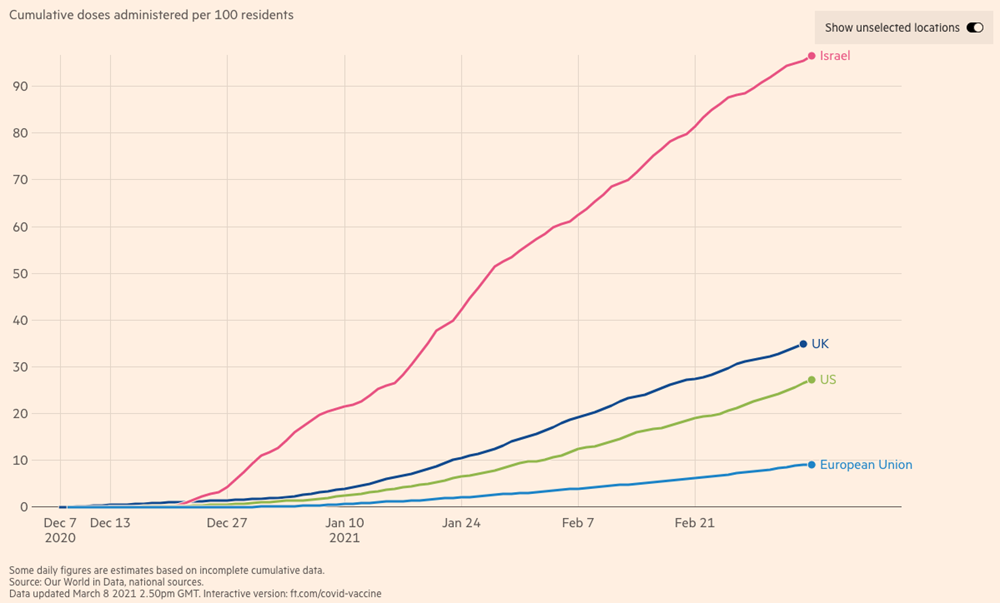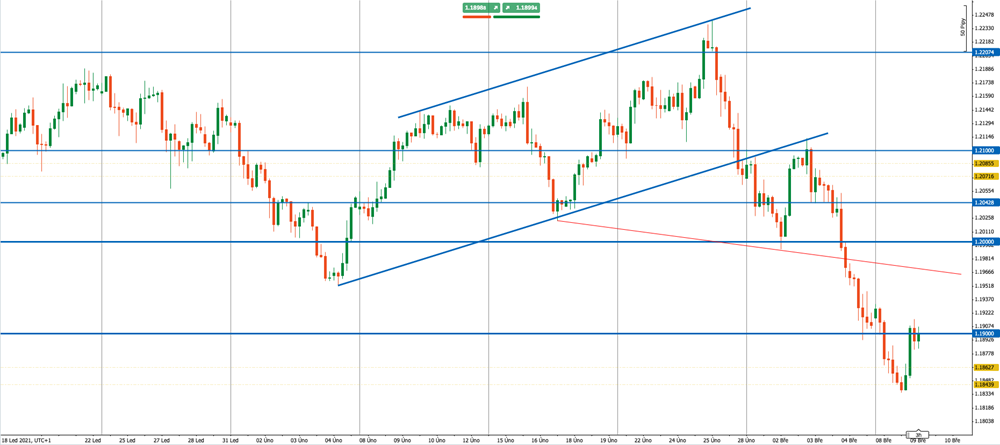The current vaccination pace puts the euro under pressure
Recent weeks have brought more nervousness to the markets, and many investors have begun to withdraw back into the US dollar. Over the past year, the US dollar has lost significantly on its value, making the current market nervousness quite a welcomed aspect as it could lead to certain, albeit smaller, profits. However, most currencies in the basket against the US dollar were able to at least partially maintain their gains. Be that as it may, the euro has fallen well below 1.20 and its weakening is supported not only by the strengthening US dollar but also by recognizing a worse prospect for the recovery of the European economy.
Reserve currency number one
The US dollar is still the number one reserve currency. This was reaffirmed when fears of rising rates in the economy suddenly manifested in the stock market prices. Technological titles, more than any other, were the ones that paid for it. However, the entire stock market has been partially corrected, which has convinced many investors that a larger correction is still a very real possibility and it is good to hedge in the US dollar foreign exchange market. The dollar has been significantly weakened by massive monetary and fiscal stimuli since the beginning of the pandemic, but its attractiveness has increased slightly due to higher yields on US bonds. This makes it a much more interesting asset when hedging against risk than, for example, gold, which offers no regular return.
The euro under pressure
At the same time, the dollar is helped by inflation expectations, as investors expect the Fed to start tightening monetary policy if inflation rises in real terms. The tools FED could choose, should this situation occur, are either raising the interest rates or ending the quantitative easing program. However, the dollar is falling on all fronts. In the short term, it came under pressure from the British pound or the Canadian dollar, on the other hand, it is most successful in pair with the euro and the Japanese yen. This has something to do with the rate of vaccination in the world. While Britain is vaccinating the fastest in Europe, most European Union countries are lagging far behind, compared to both Britain and the United States.
In the United States, 9% of the population is already fully vaccinated, which is 30 million people, and at least 60 million have already received at least the first dose. In Europe, only 3% of the population was vaccinated with the first dose. The EU has an average of only 9 doses per 100 people, while the US has 27 doses, which is three times as much. The US Centers for Disease Control and Prevention (CDC) has even admitted that those who are fully vaccinated can start meeting indoors without having to wear a face mask.
Chart: Cumulative vaccine doses allocated to individual countries per 100 inhabitants (Source: FT.com)

Better prospects in the USA
In this case, vaccination alone is not an economic indicator, rather it’s investors' expectations of an economic recovery, which is on a whole different level in the United States than in the EU. This is indicated by rising yields on US government bonds, but also by some leading indicators. The Purchasing Managers' Index (PMI) for the key services sector in the eurozone is 45.7 points, which still means a contraction in the sector, while in the United States it is 59.8 points. This is the highest level since 2014. Everything speaks clearly in favor of the US dollar. The question remains the same: “Is really enough to further strengthen the dollar, or at least weaken the euro?”.
Another massive fiscal stimulus, approved by the Senate over the weekend, will further support the expansion of the US economy and Europe will have to catch up with what is now losing once again. The euro will probably want to correct last week's massive losses in the upcoming days, and if the bond market situation calms down (yield growth stabilizes), it may rise to 1.20. However, in the first half of this year, the euro cannot be expected to return above 1.21 rapidly. Plus the EURUSD should maintain a declining trend in the medium term. However, with the arrival of the summer months, the euro could rise again as other risks gradually fade as investors begin to get rid of the dollar again. However, in order to grow faster against the US dollar, we will have to follow the development of the British pound.
Chart: EURHD 4H chart (Source: cTrader PurpleTrading)
